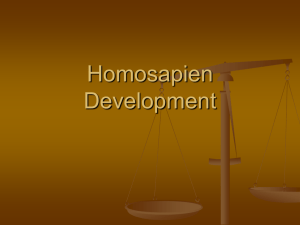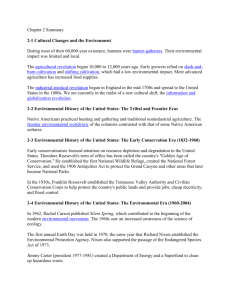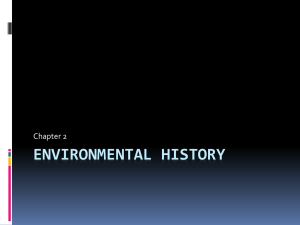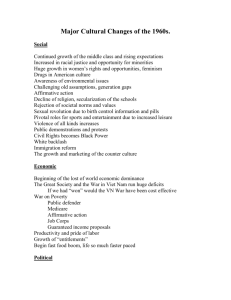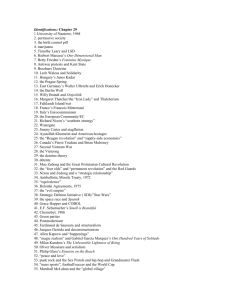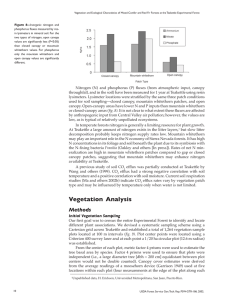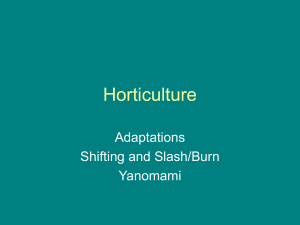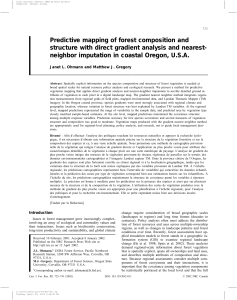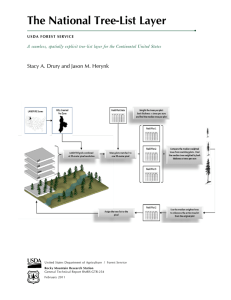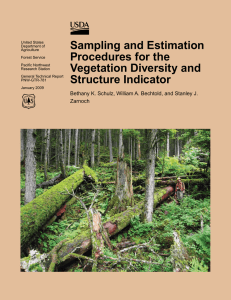Environmental Chapter 2 Lectures
advertisement
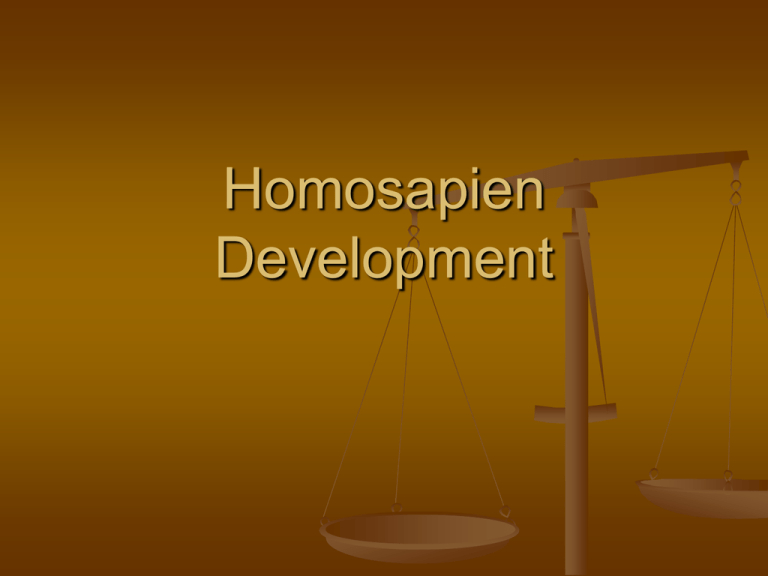
Homosapien Development During most of their 60,000-year existence, humans were hunter-gatherers. Their environmental impact was limited and local Mobile Small tribes families Covered large areas. Sustaniable The agricultural revolution began 10,000 to 12,000 years ago. Early growers relied on slash-and-burn cultivation and shifting cultivation, which had a low environmental impact. More advanced agriculture has increased food supplies slash-and-burn cultivation Cutting down trees and other vegetation in a patch of forest, leaving the cut vegetation on the ground to dry, and then burning it. The ashes that are left add nutrients to the nutrient-poor soils found in most tropical forest areas. Crops are planted between tree stumps. Plots must be abandoned after a few years (typically 2&endash;5 years) because of loss of soil fertility or invasion of vegetation from the shifting cultivation Clearing a plot of ground in a forest, especially in tropical areas, and planting crops on it for a few years (typically 2-5 years) until the soil is depleted of nutrients or the plot has been invaded by a dense growth of vegetation from the surrounding forest. Then a new plot is cleared and the process is repeated. The abandoned plot cannot successfully grow crops for 10-30 years The industrial-medical revolution began in England in the mid-1700s and spread to the United States in the 1800s. industrial-medical revolution Use of new sources of energy from fossil fuels and later from nuclear fuels, and use of new technologies, to grow food and manufacture products We are currently in the midst of a new cultural shift, the information and globalization revolution. information and globalization revolution Use of new technologies such as the telephone, radio, television, computers, the Internet, automated databases, and remote sensing satellites to enable people to have increasingly rapid access to much more information on a global scale The Early Conservation Era (18321960) Theodore Roosevelt Theodore Roosevelt's term of office has been called the country's "Golden Age of Conservation." He established the first National Wildlife Refuge, created the National Forest Service, and used the 1906 Antiquities Act to protect the Grand Canyon and other areas that later became National Parks. Environmental History of the United States: The Environmental Era (1960-2004) Silent Spring In 1962, Rachel Carson published Silent Spring, which contributed to the beginning of the modern environmental movement. The 1960s saw an increased awareness of the science of ecology. Nixon The first annual Earth Day was held in 1970, the same year that Richard Nixon established the Environmental Protection Agency 1970 . Nixon also supported the passage of the Endangered Species Act of 1973. Carter Jimmy Carter (president 1977-1981) created a Department of Energy and a Superfund to clean up hazardous waste. Reagan/Bush 1 The administrations of Ronald Reagan and George Bush, Sr. allowed some environmental laws to be undercut and supported exploitation of resources on public lands. in Clinton During Bill Clinton's administration (19932001), environmentalists were appointed to key positions
